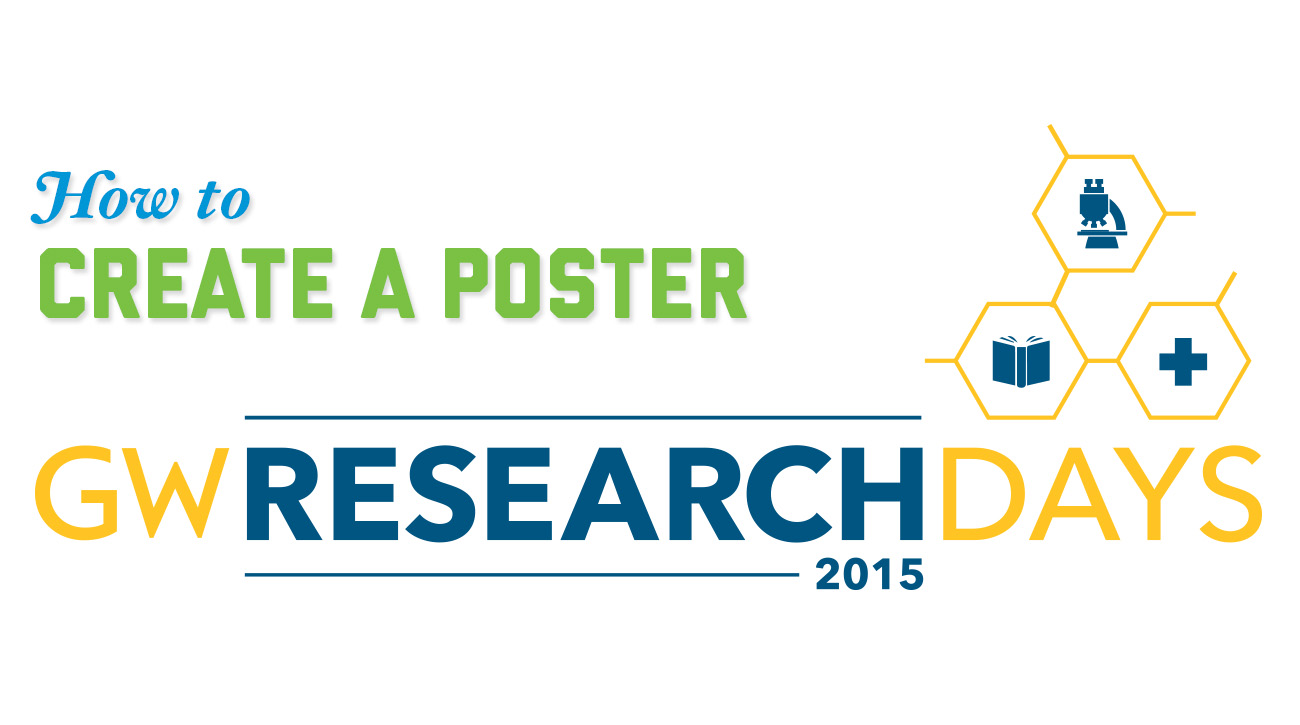On April 1, 2015, the George Washington University (GW) will host the 20th Annual Research Days for students and postdoctoral researchers from Milken Institute School of Public Health, the School of Medicine and Health Sciences, School of Nursing, and the Biomedical Engineering program. The event highlights research, scholarship and creative endeavor at GW.
If your abstract was submitted through the online submission form by the March 1, 2015 deadline, the next step is creating a poster to present your research. Below are some tips to help you create your poster, adhering to the Research Days poster requirements.
Templates:
Students must use the Milken Institute School of Public Health Templates for posters. It is important to use the Milken Institute SPH templates because it will help to identify Milken Institute SPH students during the poster sessions. Download Milken Institute SPH poster templates through the proposal development and resource portal. Two sizes are available for download: 48 inches x 48 inches and 48 inches x 36 inches.
Please note that your abstract must be approved and signed by your faculty mentor, his/her name must be on the poster.
Printing:
Between Sunday, March 1, 2015 through Tuesday, March 31, 2015, the Milken Institute SPH Dean’s Office will pay up to $100 toward printing the first 50 student posters under the condition that they are printed at the FedEx Office Print and Ship Center at 2020 K Street, NW.
Important! When placing your order, use the code “GW School of Public Health” in order to be eligible for this benefit. Students are responsible for any balance above $100 when ordering. Please allow 24 hours for your poster to be printed.
Related Workshops
Quick Review:
- Follow the poster requirements
- Use the Milken Institute SPH poster templates
- Inclue your mentor's name on your poster
- Print at the FedEx location at 2020 K Street if you want $100 to go towards your printing costs.
- Questions? Contact [email protected] or [email protected]; tweet @GWResearchDays or visit the GW Research Days 2015 website.


